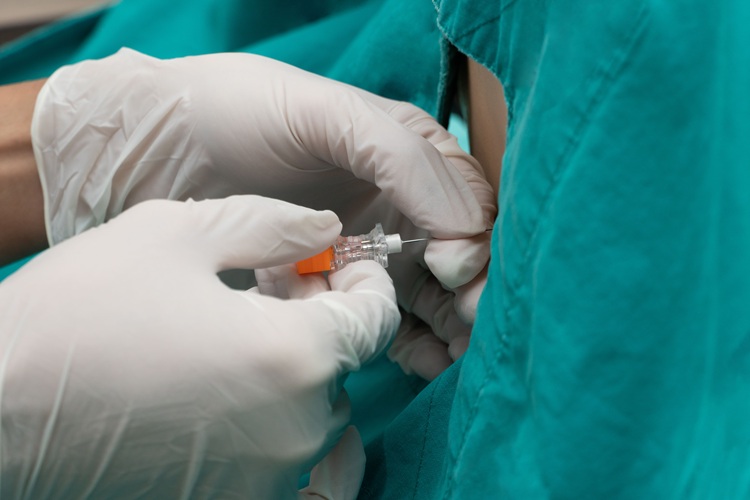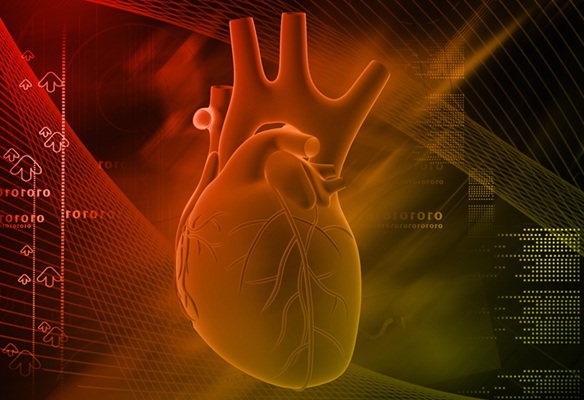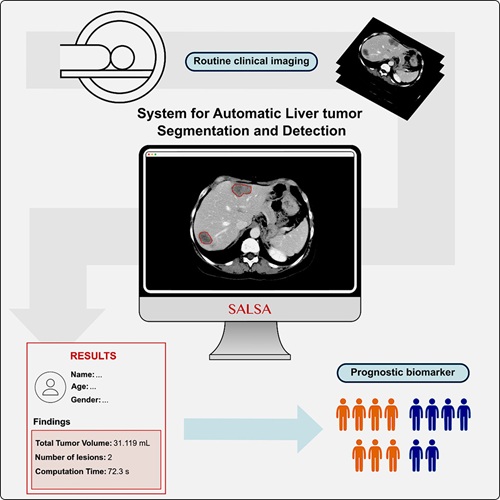Computer-Aided Image Diagnostic Designed for Enhanced Breast Tumor Diagnosis
|
By MedImaging International staff writers Posted on 13 Nov 2013 |

Image: Quantitative image analysis workstation in the Giger laboratory for assessing breast lesions observed in MRI scans, showing automated lesion segmentation, feature extraction (volumetrics, morphology, texture, kinetics), and estimation of the probability of malignancy (Photo courtesy of SPIE).
Researchers are developing computer-aided diagnosis (CADx) and quantitative image analysis (QIA) techniques for mammograms, ultrasound images, and magnetic resonance image (MRI) scans to identify specific tumor characteristics, including shape, size, and sharpness.
The lead researcher of the study, Maryellen Giger, is a professor of radiology/medical physics and director of the Imaging Research Institute at the University of Chicago (IL, USA). Currently, computer-aided detection provides a “second opinion” to a radiologist in identifying suspicious areas within mammograms. Next, radiologists will ultimately be able to use computer-extracted lesion characteristics when performing a diagnosis to assess whether the tumor is cancerous.
The role of quantitative image analysis is expanding beyond screening and toward application of risk assessment, diagnosis, prognosis, and response to therapy, and in using data to identify how tumor characteristics apply to disease states, according to Prof. Giger. This could lead to the comparison of a tumor’s features with thousands of similar cases, enabling the exploration of complex relationships among tumor characteristics across large populations, which may ultimately contribute to the design of patient-specific treatments. It could also be used to study the association between a tumor’s observable characteristics and cell-level data for the emerging field of imaging and genomics, with a goal of identifying genes that influence the risk for disease.
Whereas these findings are exciting for digital mammogram technology, researchers are expanding their analysis to breast ultrasound and MRI scans due to the need for clinical validation within a larger screening population.
Through research between genomics and image-based characteristics, the researchers could soon be able to clarify which tumor characteristics are related to and which complement genetic findings, with the ultimate goal of merging them to include both genetic and environmental factors in clinical decisions. Researchers are now using data-mining methods to identify those possible correlations.
The study’s findings were published October 14, 2013, in the SPIE Newsroom.
Related Links:
University of Chicago
The lead researcher of the study, Maryellen Giger, is a professor of radiology/medical physics and director of the Imaging Research Institute at the University of Chicago (IL, USA). Currently, computer-aided detection provides a “second opinion” to a radiologist in identifying suspicious areas within mammograms. Next, radiologists will ultimately be able to use computer-extracted lesion characteristics when performing a diagnosis to assess whether the tumor is cancerous.
The role of quantitative image analysis is expanding beyond screening and toward application of risk assessment, diagnosis, prognosis, and response to therapy, and in using data to identify how tumor characteristics apply to disease states, according to Prof. Giger. This could lead to the comparison of a tumor’s features with thousands of similar cases, enabling the exploration of complex relationships among tumor characteristics across large populations, which may ultimately contribute to the design of patient-specific treatments. It could also be used to study the association between a tumor’s observable characteristics and cell-level data for the emerging field of imaging and genomics, with a goal of identifying genes that influence the risk for disease.
Whereas these findings are exciting for digital mammogram technology, researchers are expanding their analysis to breast ultrasound and MRI scans due to the need for clinical validation within a larger screening population.
Through research between genomics and image-based characteristics, the researchers could soon be able to clarify which tumor characteristics are related to and which complement genetic findings, with the ultimate goal of merging them to include both genetic and environmental factors in clinical decisions. Researchers are now using data-mining methods to identify those possible correlations.
The study’s findings were published October 14, 2013, in the SPIE Newsroom.
Related Links:
University of Chicago
Latest Radiography News
- AI Radiology Tool Identifies Life-Threatening Conditions in Milliseconds

- Machine Learning Algorithm Identifies Cardiovascular Risk from Routine Bone Density Scans
- AI Improves Early Detection of Interval Breast Cancers
- World's Largest Class Single Crystal Diamond Radiation Detector Opens New Possibilities for Diagnostic Imaging
- AI-Powered Imaging Technique Shows Promise in Evaluating Patients for PCI
- Higher Chest X-Ray Usage Catches Lung Cancer Earlier and Improves Survival
- AI-Powered Mammograms Predict Cardiovascular Risk
- Generative AI Model Significantly Reduces Chest X-Ray Reading Time
- AI-Powered Mammography Screening Boosts Cancer Detection in Single-Reader Settings
- Photon Counting Detectors Promise Fast Color X-Ray Images
- AI Can Flag Mammograms for Supplemental MRI
- 3D CT Imaging from Single X-Ray Projection Reduces Radiation Exposure
- AI Method Accurately Predicts Breast Cancer Risk by Analyzing Multiple Mammograms
- Printable Organic X-Ray Sensors Could Transform Treatment for Cancer Patients
- Highly Sensitive, Foldable Detector to Make X-Rays Safer
- Novel Breast Cancer Screening Technology Could Offer Superior Alternative to Mammogram
Channels
MRI
view channel
New MRI Technique Reveals Hidden Heart Issues
Traditional exercise stress tests conducted within an MRI machine require patients to lie flat, a position that artificially improves heart function by increasing stroke volume due to gravity-driven blood... Read more
Shorter MRI Exam Effectively Detects Cancer in Dense Breasts
Women with extremely dense breasts face a higher risk of missed breast cancer diagnoses, as dense glandular and fibrous tissue can obscure tumors on mammograms. While breast MRI is recommended for supplemental... Read moreUltrasound
view channel
New Incision-Free Technique Halts Growth of Debilitating Brain Lesions
Cerebral cavernous malformations (CCMs), also known as cavernomas, are abnormal clusters of blood vessels that can grow in the brain, spinal cord, or other parts of the body. While most cases remain asymptomatic,... Read more.jpeg)
AI-Powered Lung Ultrasound Outperforms Human Experts in Tuberculosis Diagnosis
Despite global declines in tuberculosis (TB) rates in previous years, the incidence of TB rose by 4.6% from 2020 to 2023. Early screening and rapid diagnosis are essential elements of the World Health... Read moreNuclear Medicine
view channel
New Imaging Approach Could Reduce Need for Biopsies to Monitor Prostate Cancer
Prostate cancer is the second leading cause of cancer-related death among men in the United States. However, the majority of older men diagnosed with prostate cancer have slow-growing, low-risk forms of... Read more
Novel Radiolabeled Antibody Improves Diagnosis and Treatment of Solid Tumors
Interleukin-13 receptor α-2 (IL13Rα2) is a cell surface receptor commonly found in solid tumors such as glioblastoma, melanoma, and breast cancer. It is minimally expressed in normal tissues, making it... Read moreGeneral/Advanced Imaging
view channel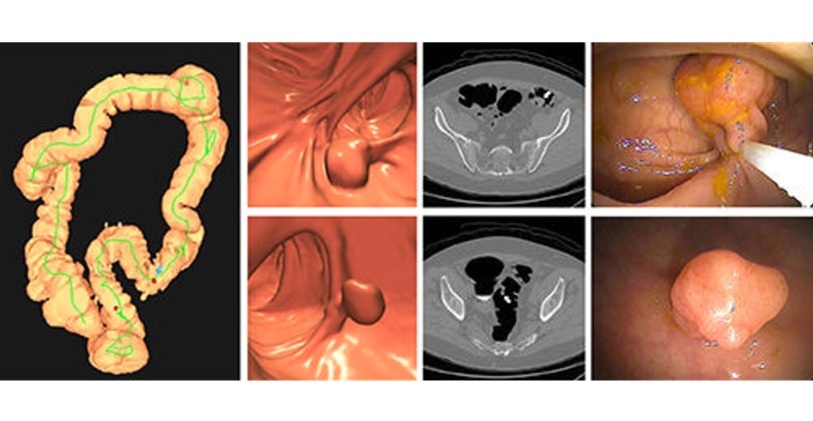
CT Colonography Beats Stool DNA Testing for Colon Cancer Screening
As colorectal cancer remains the second leading cause of cancer-related deaths worldwide, early detection through screening is vital to reduce advanced-stage treatments and associated costs.... Read more
First-Of-Its-Kind Wearable Device Offers Revolutionary Alternative to CT Scans
Currently, patients with conditions such as heart failure, pneumonia, or respiratory distress often require multiple imaging procedures that are intermittent, disruptive, and involve high levels of radiation.... Read more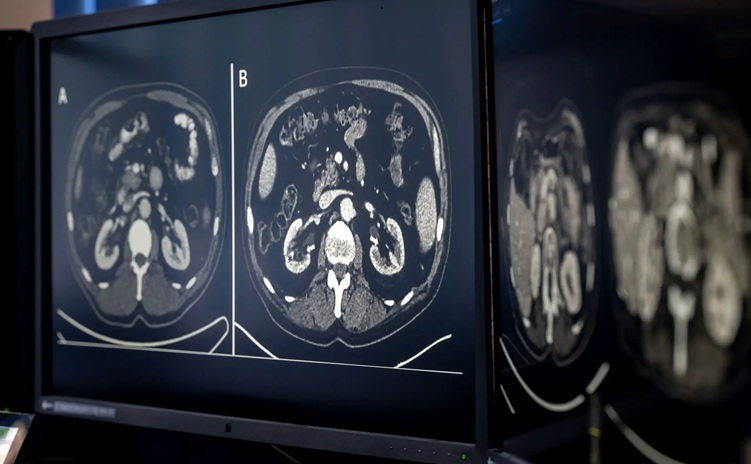
AI-Based CT Scan Analysis Predicts Early-Stage Kidney Damage Due to Cancer Treatments
Radioligand therapy, a form of targeted nuclear medicine, has recently gained attention for its potential in treating specific types of tumors. However, one of the potential side effects of this therapy... Read moreImaging IT
view channel
New Google Cloud Medical Imaging Suite Makes Imaging Healthcare Data More Accessible
Medical imaging is a critical tool used to diagnose patients, and there are billions of medical images scanned globally each year. Imaging data accounts for about 90% of all healthcare data1 and, until... Read more
Global AI in Medical Diagnostics Market to Be Driven by Demand for Image Recognition in Radiology
The global artificial intelligence (AI) in medical diagnostics market is expanding with early disease detection being one of its key applications and image recognition becoming a compelling consumer proposition... Read moreIndustry News
view channel
GE HealthCare and NVIDIA Collaboration to Reimagine Diagnostic Imaging
GE HealthCare (Chicago, IL, USA) has entered into a collaboration with NVIDIA (Santa Clara, CA, USA), expanding the existing relationship between the two companies to focus on pioneering innovation in... Read more
Patient-Specific 3D-Printed Phantoms Transform CT Imaging
New research has highlighted how anatomically precise, patient-specific 3D-printed phantoms are proving to be scalable, cost-effective, and efficient tools in the development of new CT scan algorithms... Read more
Siemens and Sectra Collaborate on Enhancing Radiology Workflows
Siemens Healthineers (Forchheim, Germany) and Sectra (Linköping, Sweden) have entered into a collaboration aimed at enhancing radiologists' diagnostic capabilities and, in turn, improving patient care... Read more












